
I certainly claim no expertise or long experience in parachuting, as do many classmates and “master blaster” friends, some with hundreds of static-line and free-fall jumps. My brief parachuting career consisted of only 7 static-line jumps, each uniquely exciting. But my last jump was my most memorable by far: a “water descent” into the shark-infested waters of the South Pacific off the coast of Australia … without a reserve ‘chute!
A little background. In August 1967, I was among the first group of USMA cadets to be allowed to attend the US Army Parachute School at Ft Benning, GA, as an extra cadet training experience following my required month-long troop training assignment (known then as AOT – Army Orientation Training) in a regular Army unit. To be part of this privileged group, we volunteered to give up 3 weeks of our 4-week cadet summer leave. What a deal! We made all five of our jumps from the venerable US Air Force C-119 Flying Boxcar, earning the coveted silver wings of an Army Paratrooper.
As an aside, it was during that training period that Hollywood legend John Wayne visited Ft. Benning to film scenes of real soldiers in airborne training as part of his new movie, The Green Berets. We airborne trainees were offered the opportunity to be part of the filming of that movie if we were willing to report for an extra day of training on Saturday, a rare day off. Because I had previously made plans to meet my girlfriend in Atlanta, I turned down John Wayne’s kind offer of “stardom” and headed to Atlanta instead. Good thing, too: that girlfriend has been my wife for over 50 years now!
Just two years later, January 1970, as a 2d LT in the Florida phase of Ranger School, I parachuted into Eglin Airfield marking my 6th jump. With no future assignments to airborne outfits, I thought my jumping days were over. Until 1978, that is…
During my tour as a Tactical Officer at USMA from 1976 to 1979, I was selected to be the Officer in Charge of the Australian Royal Military College (RMC) Exchange. Well, someone had to do it! This duty included escorting 4 outstanding First Class (senior) USMA Cadets to Australia for 2 weeks in August 1978, which, incidentally, was in the dead of winter “Down Under.”
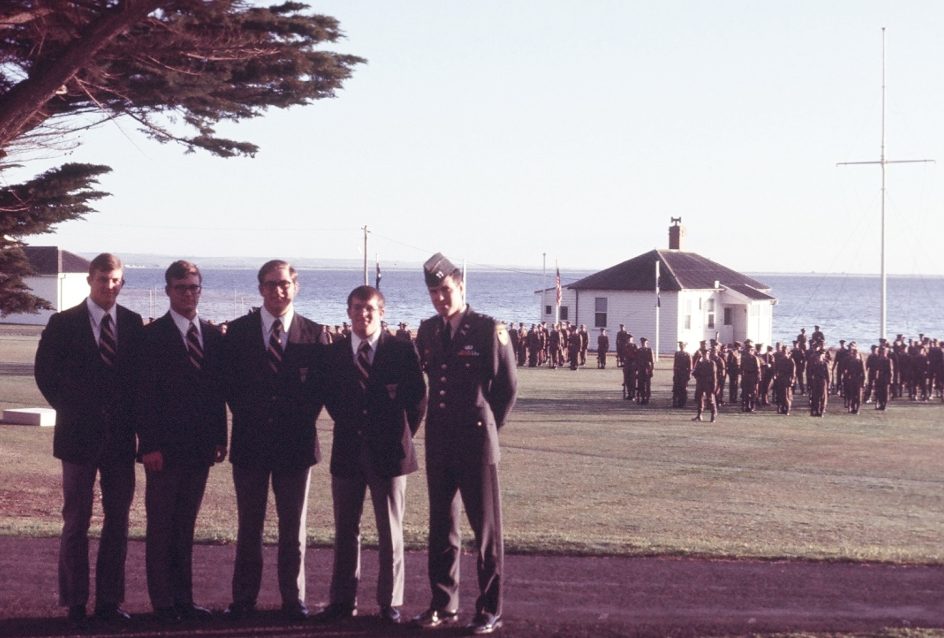
Our schedule was packed with touring, starting at the RMC in Duntroon, sightseeing around the capital at Canberra, visiting the US Ambassador to Australia, being “wined and dined” at various social events, and participating in classes and military training. The Australian military at the time had a very “macho” culture and we were challenged daily to show our friends whether we had the “right stuff.” Their biggest challenge lay ahead.
That challenge and a major highlight of our trip came as an invitation to visit the Australian Army Parachute Training School at Williamtown. Located on the Pacific coast near Newcastle in New South Wales, it’s about 100 miles north of Sydney.
The Parachute School senior officer and staff warmly welcomed us and laid out their plans for our day: we were invited to make a “water descent” into the shark-infested waters off the coast! No worries! We were to be plucked out of the water quickly by fast boats. With my 3 airborne-qualified cadets, we four Yanks enthusiastically accepted the Aussie invitation and challenge to jump with our Australian counterparts: 4 RMC cadets and their Australian Army captain.
As we suited up for the jump, I noticed we would be using the standard T-10 parachute, similar to what I had used in all my jumps. One major difference, however … when I asked for my reserve ‘chute, I was told “it was not needed; it would only get wet!”
Our instructions were simple: once we jumped from the aircraft, we were to keep our eyes on the 500-foothills surrounding Williamtown. Then, when about eye-level with them, to turn our quick release buckle and strike it to loosen all our parachute harness straps – that meant we would then be dangling by the 2 straps under our armpits 500 feet above the water – not a comfortable idea, but better than getting entangled in the straps, lines, and canopy when we hit the water.
We four Americans boarded the aircraft, an Australian RAAF Caribou, and sat opposite our 5 Australian friends. It was a beautiful day, although the winds seemed brisk on the ground. Aboard our lead plane was a “wind dummy” which the Aussies planned to kick out to measure windspeed and direction for safety.
On the first pass at jump altitude, the Aussie “stick,” led by my counterpart captain, briskly walked off the lowered rear ramp while we watched as their canopies fully deployed and the ramp closed up. Next pass would be our turn.
Within a few minutes, our plane looped back over the water, the ramp dropped open, and the green GO light popped on. I led my 3 cadets off the ramp into the cool air and watched as each of our ‘chutes fully opened. I guess we didn’t need that reserve after all!
Not much time to think, though, as I descended rapidly and popped the quick release button at about 500 feet and dangled by two harness straps under my arms. As I neared the water, I then became aware of the high wind speed. During my final 50-foot descent to splashdown, I was sailing horizontally on my back above the water. I pulled my arms up over my head, slipped out of the harness straps, hit the water and watched my chute still fully inflated and sailing away, greatly relieved to be unentangled. And, true to their word, the Aussies plucked us all out of the drink quickly and sped us to shore.
Now safely on shore with my cadets, the senior Aussie Parachute School officer explained that all remaining jumps after ours were cancelled because wind speed had exceeded 20 knots, well above the safe jump limit. He then told us that the Aussie captain who jumped ahead of us had been blown ashore and landed on top of a building, breaking his leg and barely missing a high-tension line. He quickly added, “No worries, mate! We didn’t want to disappoint you Yanks by cancelling the jump too soon before you had your chance!”
Needless to say, we were all thankful he did not cancel the jump and very grateful that the water descent ended safely for us. But mostly, we Yanks knew that the Aussies knew we met their challenge and upheld the honor of the Corps!

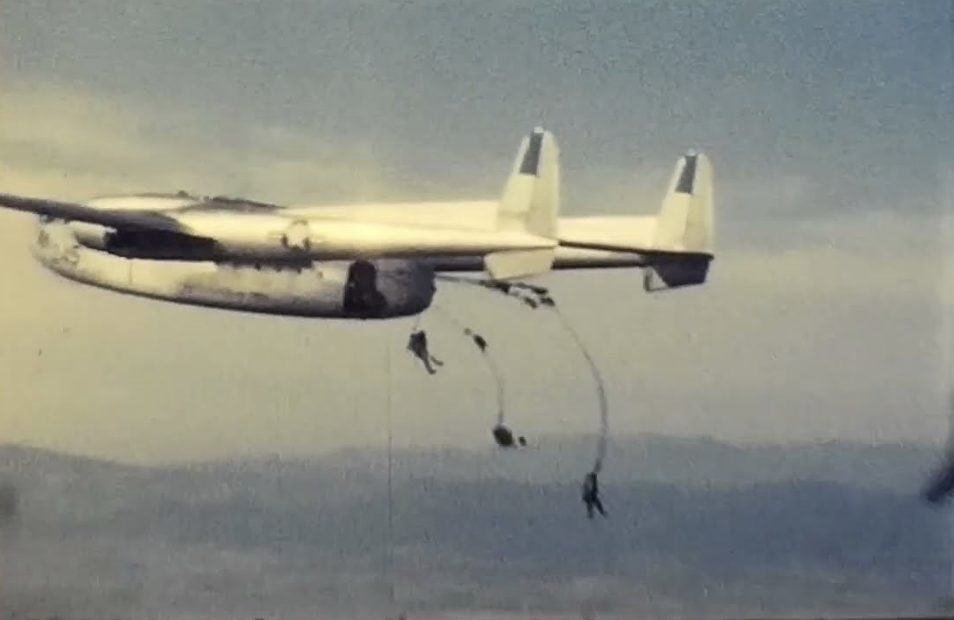
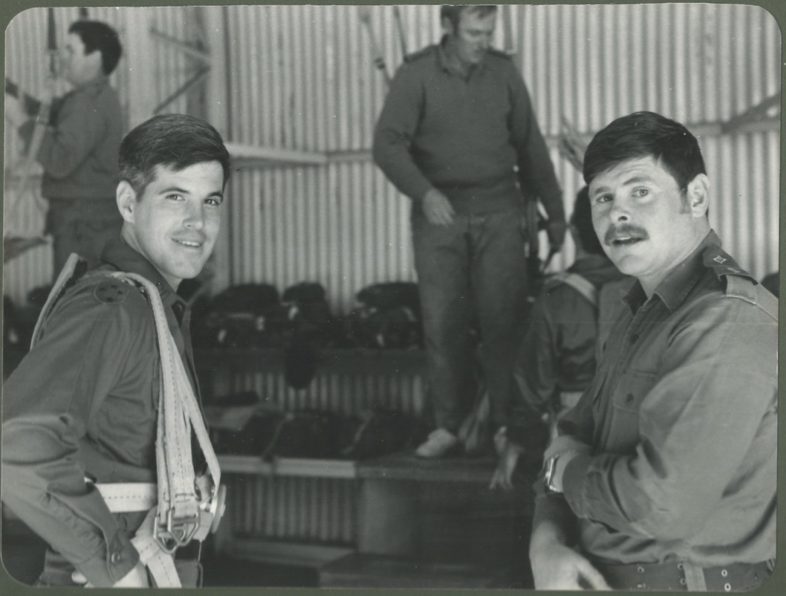
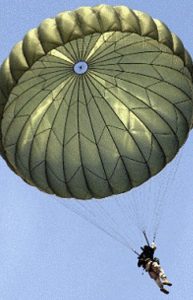
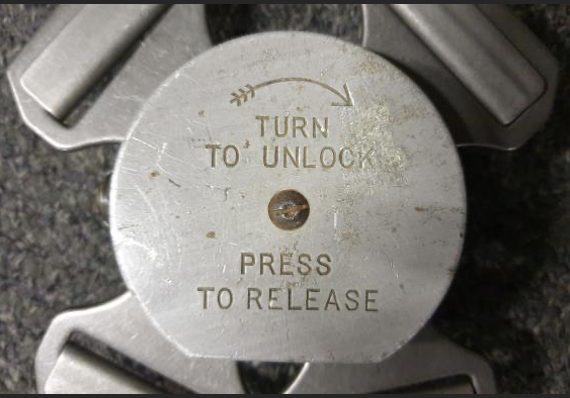
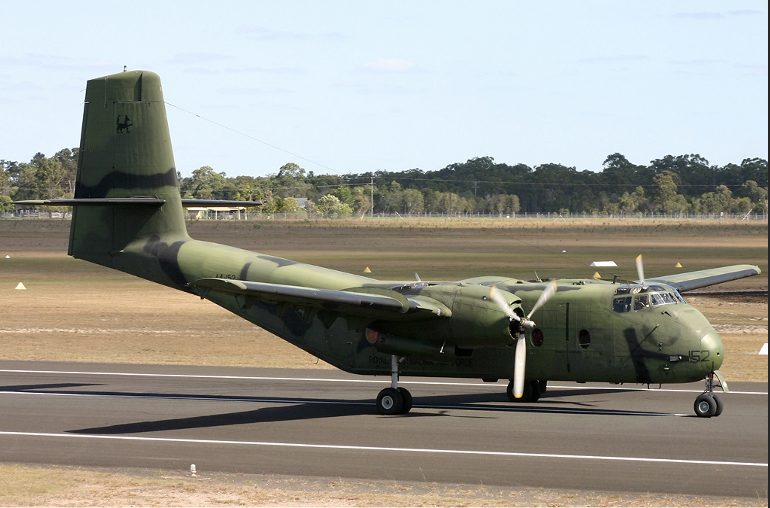

Great story, Eric!
Eric,
Great paratrooper story. It was nice of the sharks to give you a pass!
Jim
You may have only made 7 jumps, but it’s a great story to have in your resume. Thanks for sharing. God bless.
Very exciting story Eric. I thought that jump in Ranger school where they dropped us out over a concrete runway couldn’t be topped, but I think you did!
Super story, Eric…Thanks…Rick
Great story! Keep the memories coming, Eric!
Fantastic story “mate”. I especially like the part about trading your movie stardom for your married future; tough choice, but well worth it.
Great story, Eric. Reminds me of a “jump” adventure when I was a company commander at Bad Tölz and knew the German airborne training company commander. It was a great arrangement where I always could join his trainee jumps, knowing it would be an adventure. (He was a little different than most Bundeswehr majors; he would spend his annual vacations rucking alone in the Malaysian jungle.)
When we jumped together, we would each stand in the door, left and right. (Yes, they were jumping their T-10s simultaneously from C-130s.) The school drop zone was shortly after a small village, RR tracks and then street, which is when the green light came on. On this jump, he yelled to me and then jumped, so I jumped too… short of the village! I’ve never climbed risers so fast and high and just did manage to miss the roofs, landing in someone’s back yard. He escaped the roofs too and laughed all the long way to the drop zone.
Great story. Thanks Eric.
Next week we have Aussie friends coming for a 3 week visit. He being a former British SAS troop.
Really enjoyed your story, Eric. I would not have jumped without the reserve ‘chute! Mainly because I would have been psyched out by a previous experience at USMA. As a cadet, I was in the skydiving club for a while. On one jump, after a short freefall and then pulling the ripcord, I was slightly out of stable position and the drogue ‘chute whapped my hand when it came out. Next thing I see is a tangled mess above my head. Quickly pulled that reserve ‘chute open and fed it out, allowing me to be here and tell the tale! And that was my last skydiving jump! After graduation, I too had the 5 Airborne school jumps, and then one in Ranger, and one while in MACV school at Bragg, prior to Vietnam.